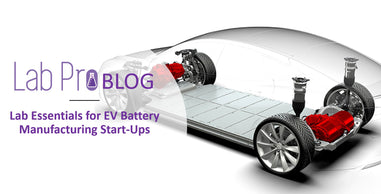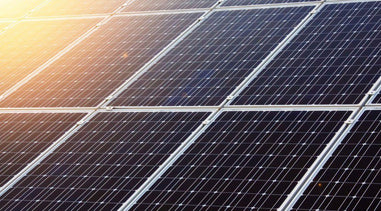- No products in the cart.
Thin film solar cell semiconductors are in the spotlight for the future of electronics. Recently, researchers found a method for creating a thin film semiconductor material called phosphorene. This material is made using a “sticky tape” method that isolates a single-atom-thin layer of black crystalline phosphorous, the same method used in the Nobel Prize-winning discovery of graphene.
However, unlike graphene, phosphorene is a semiconductor that can be used in various electronics technologies. Researchers spearheading this discovery expect that this ultra-thin semiconductor film can have far-reaching applications, including the manufacture of solar cells. Although phosphorene is not yet being mass-produced for industrial applications, it has exciting implications for the future of thin film semiconductors.
Currently, the thin film semiconductor most commonly used in solar cell manufacturing is silicon. In particular, amorphous silicon is deposited on a surface, creating a thin film semiconductor with a process known as plasma-enhanced chemical vapor deposition (PECVD). While both of these materials are thin film semiconductors, there are some important differences to consider for the future of solar cell production. In this post, we will discuss these considerations for you to decide which thin film solar cell semiconductor is right for you.
Silicon Thin Film Solar Cell Semiconductors
The manufacture of thin-film silicon is done my depositing a thin layer of amorphous silicon on a substrate like glass or plastic. This thin film of silicon can then be used as a semiconductor in a wide range of electronics purposes. For solar cells, this silicon thin film represents a conservative, affordable, and efficient semiconductor material that can be used to convert the sun’s light into energy.
Silicon thin film semiconductors come with some benefits. First, the manufacturing of these thin films for use in solar cells is well established. This means that equipment, materials, tools, and potential hiccups associated with them have all been optimized in the past. An established manufacturing process leads to a quicker and more cost-effective implementation in a new facility.
Furthermore, since silicon thin film solar cells are well understood, research has been done on multiple configurations. This translates to the ability to select from well-established solar cell composition to best suit your market needs. However, this same point also highlights a negative aspect of silicon thin films: there is a lot of competition in the silicon thin film solar cell industry.
Compared to phosphorene, there are a few downsides to the use of silicon. Most importantly, silicon thin films are made by depositing a thin layer of amorphous silicon on a substrate. This amorphous nature means that the element itself creates a relatively disordered surface structure, which may not be optimal for interacting with and absorbing the energy from light. In fact, silicon thin films are less efficient as a charge carrier than phosphorene in preliminary tests. Finally, an amorphous layer also means that the film itself is physically thicker than those of phosphorene. This translates to more physical material needed to produce.

Pictured: THIN-FILM SILICON SOLAR CELLS
Photo By: Helmholtz Berlin
Phosphorene Thin Film Solar Cell Semiconductors
Phosphorene thin films were recently discovered and hold a lot of potential as a semiconductor in solar cells. In preliminary research, phosphorene thin films are a better charge carrier compared to silicon, meaning they can be used to make a more efficient solar cell. The superior properties of phosphorene thin films are mostly due to its ordered structure. Unlike the amorphous layer of silicon, phosphorene thin films consist of single-atom thick layers. These atoms are aligned in a uniform manner. The resulting film is thin, light, and an effective semiconductor with good optical properties. Furthermore, the number of layers is easy to control to optimize for different purposes.
The major downside to phosphorene thin films is that it’s a new technology. Since it’s so new, there is not yet any established manufacturing processes, equipment, or facilities. This means that implementing the production of phosphorene thin film solar cells will require a lot of research and development. This translates to a challenging and expensive undertaking for the trailblazer manufacturers. However, it also presents a unique opportunity to be a first to harness and perfect a new technology in the increasingly competitive solar cell industry.
| Silicon Thin Flims | Phosphorene Thin Films |
Pros:
|
Pros:
|
Cons:
|
Cons:
|
The Right Supplier Will Get You There
Both silicon and phosphorene thin film semiconductors are logical choices of to be used in the production of solar cells. The major difference in choosing silicon or phosphorene thin films depends on your goals. If you want to implement a new, promising technology, exploring phosphorene may be for you. However, if you want the faster and financially safer option, silicon thin films may be a better choice. No matter what thin film semiconductor you choose to work with, you will always benefit from having a knowledgeable supplier in your corner.
__
For over 40 years, Lab Pro has been committed to delivering the highest quality products, cutters, tweezers, microscopes, and cleaning solutions to solar panel production laboratories worldwide. Come visit the biggest Lab Supply showroom in the Bay Area, or contact us online or at 888-452-2776.
References:
http://www.altenergy.org/renewables/ultrathin-solarcells.html
https://www.sciencedaily.com/releases/2015/07/150720110424.htm











































